I know the movie quote from Bull Durham doesn’t go, “Sometimes you win, sometimes you lose, sometimes you play Vegas,” but it feels appropriate. With the San Jose Sharks’ 2017-18 season now over, it’s time to look back and review it in depth.
We’ll cover the season in nine parts and as this goes forward over the next couple weeks, we’ll take deep dives into each area. Today we begin with the main points.
- Main Points
- Forwards
- Joe Thornton
- Defensemen
- Goalies
- Roster and Salary Cap
- Coaches
- GM and Owner
- Summary
San Jose entered the season with one notable difference to the roster from the prior season: No Patrick Marleau. The Sharks’ all-time leading goal scorer went to the Toronto Maple Leafs, leaving a 27-goal hole in the lineup. They’d finish the season with a second notable difference: Missing an injured Joe Thornton. He’s the team’s all-time leader in pretty much every area Marleau isn’t.
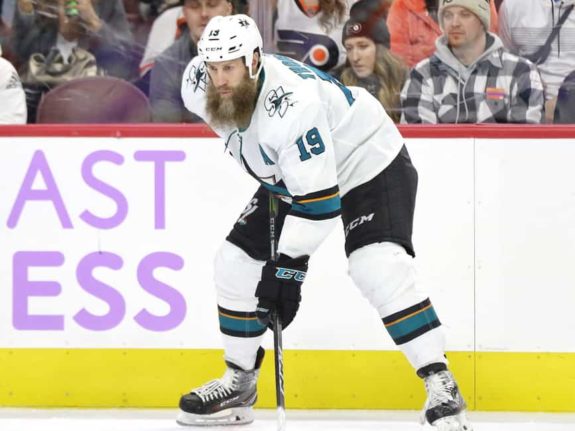
A full season without Marleau and about half without Thornton meant the Sharks were missing lots of production. Thornton finished with 36 points and, of course, all of Marleau’s points this season were with his new club. Last season, the duo combined for 96 points. In the ten full seasons prior, they’d combined to average 152 points per season.
Despite all the missing production, the Sharks had a solid season. They posted 100 regular season points, the highest regular season point total in head coach Peter DeBoer’s three seasons. They also delivered an opening playoff round sweep of the Anaheim Ducks and ended their season with a highly competitive series against the Vegas Golden Knights. An improvement on last season’s opening round loss, though not as good as the 2015-16 season’s Western Conference Championship.
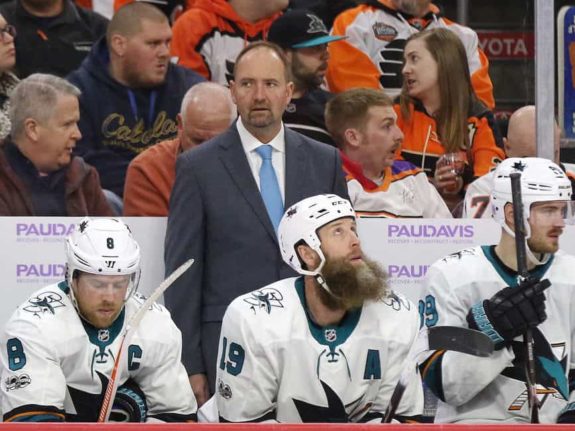
This was a transition season for San Jose. So what went wrong, what went right and how are things looking for the Sharks’ future? Here are the main points.
Starting the Season for San Jose
What the Sharks were, at least at the start of the season, was relatively healthy. The playoff loss in 2017 to the Edmonton Oilers was understandable given the rash of injuries, including to the team’s top three centers. Thornton had torn knee ligaments, Logan Couture a broken mouth (for lack of a better description) and Tomas Hertl, a broken foot. But the list didn’t stop there.
Paul Martin had an ankle problem (which he didn’t recover from until well into this season). Joel Ward was seen with his arm in a sling just a couple weeks after the season ended. Marleau had a broken thumb, Joonas Donskoi had a separated shoulder and Joe Pavelski wasn’t right either.
Attrition is part of an NHL season and the Sharks were unusually hard hit last season. This might have been the reason Sharks general manager Doug Wilson didn’t lose confidence in his core group. Wilson kept his core (except Marleau), then allowed younger players within the organization to compete for jobs. The healthy competition Wilson sought paid off.
The group of young defensemen included Dylan DeMelo, Tim Heed and Joakim Ryan. The younger forwards included Barclay Goodrow, Ryan Carpenter, Danny O’Regan and Marcus Sorensen.
Some younger players made an impact in prior seasons; their opportunity was to grab a bigger role. This group included Chris Tierney, Timo Meier, Tomas Hertl, Kevin Labanc and backup goalie Aaron Dell.
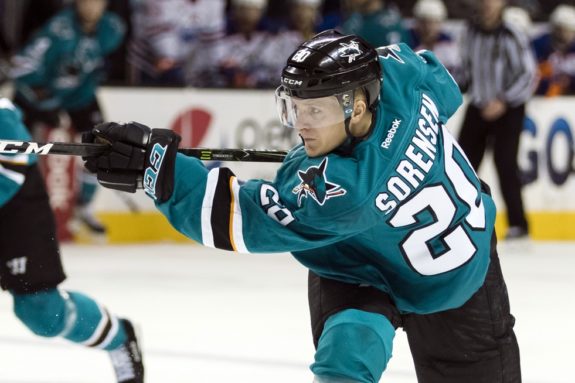
For the younger players to succeed, they’d needed to push some veterans from the lineup, including players like Joel Ward, Jannik Hansen and Paul Martin.
Many of the younger players seized their opportunity. Their increased effectiveness was critical to the success of the team. Peter DeBoer and his coaching staff also deserve a fair share of the credit for helping these players develop. In the end, several of the younger players mentioned became every game players; others upgraded their spot in the pecking order through improved play. Even some, who didn’t grab a full-time role, became useful in a depth role. The team’s depth was an asset throughout the season.
The Sharks Lineup Changes
The Sharks roster remained largely unchanged through the first half of the season, though Carpenter was waived and claimed by Vegas.
While the Sharks fielded a strong lineup into January, things changed a bunch in a period lasting just over a month. On Jan. 23, Thornton was injured against the Winnipeg Jets. For the second straight season, he tore ligaments in a knee. While Thornton wasn’t having an elite season, he was improving and keyed a scorching Sharks power play. With Thornton out, the Sharks continued to compete but were uneven over the next month. In late February, the Sharks added a solid piece in fourth line center Eric Fehr and then made a much bigger move, adding high-end winger Evander Kane.
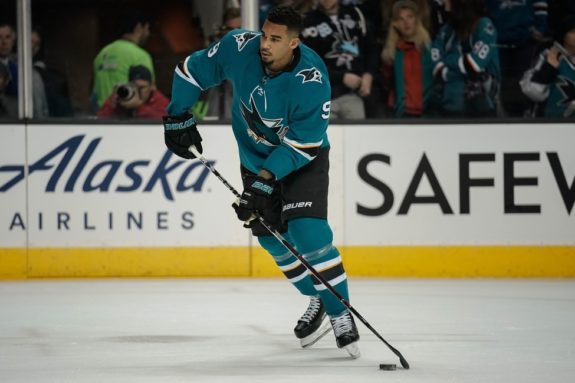
The additions of Kane and Fehr, plus significant improvements from Tomas Hertl and Timo Meier, recast the Sharks identity as a power-forward driven team.
When the Sharks went on an eight-game win streak shortly after Kane’s arrival, expectations rose considerably. But the Sharks stumbled in the final two weeks of the season and were overtaken in the standings by a streaking Anaheim Ducks team. At the end of the regular season, San Jose finished with 100 points, good for third in the Pacific Division and sixth in the Western Conference – Anaheim was one of two Western teams that finished with 101 points.
The Sharks in the Playoffs
The Sharks and Ducks, two teams headed in opposite directions at the close of the season, met in the opening round. But, if anyone thought the trends at the close of the season were going to predict the series, well, they were wrong.
A poised San Jose team swept the Ducks in four games. The Ducks bizarrely tried to intimidate the Sharks instead of lining up and just playing hockey. The Ducks’ tactic failed massively. Still, the excitement coming from the sweep was tempered. Their next opponent, the Vegas Golden Knights, also swept their opening round series.
San Jose skated competitively with the Golden Knights but fell because they weren’t able to solve Vegas goalie Marc-Andre Fleury often enough. The Sharks skated evenly or better in four of the six games, but Fleury was consistently brilliant (his game-saving save in overtime of Game 3 is among the best of the season) and occasionally lucky (which Fleury acknowledged), and that was enough of to tilt the series and end San Jose’s season.
Ups and Downs, Comings and Goings
Prior to the season, the Sharks parted company with Marleau, defenseman David Schlemko (to Vegas in the expansion draft) and assistant coach Bob Boughner, who took the head coaching job with the Florida Panthers (and had a good first season there). Of the three departures, only one received a standing ovation upon his return to the Shark Tank. With the spotlight on him, a clearly emotional Marleau saluted the fans as the fans saluted him for several minutes in one of the season’s highlights.
Other departures included free agent pugilist Micheal Haley who joined the Panthers and defenseman Mirco Mueller who was traded to the New Jersey Devils for draft picks.
We previously noted Carpenter’s departure. O’Regan was another forward who left. He was part of the trade with Buffalo for Evander Kane. And while he was only briefly part of the Sharks, goalie Troy Grosenick of the team’s AHL affiliate (the San Jose Barracuda) was also traded. Grosenick provided a brilliant NHL debut in November 2014, when he recorded a 45-save shutout in front of his emotional family as San Jose beat the Carolina Hurricanes, 2-0. It was one of the top highlights from that season.
The new additions to San Jose included Fehr, Kane and assistant coach Rob Zettler. An NHL debut came for defenseman Joakim Ryan, who had a terrific rookie season. Ryan’s AHL defensive partner from last season, Tim Heed (technically not making his debut since he played one NHL game in last season), played in 29 NHL games this season. Also making his NHL debut was 21-year-old Dylan Gambrell. In March, Gambrell finished his college career at the University of Denver. He played three games for San Jose in April, garnering about 30 minutes of ice time.
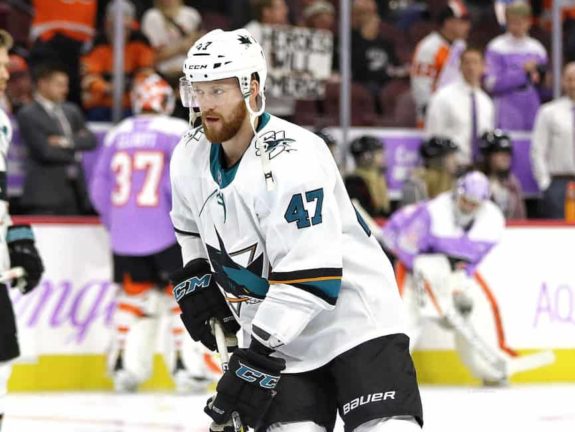
While there will be more detail in the sections ahead, I’ll note two players whose seasons fall into the down category. Jannik Hansen went nearly a year between goals and finished the season with just two. Though his late-season play probably merited better, Hansen had just 14 points, the lowest output in his career. The very likeable Joel Ward, who turned 37 in December, is probably on his last NHL legs. He had only 12 points on the season, his lowest career output over a full season. Both Hansen and Ward are free agents come July 1. Expect Hansen to play elsewhere next season, while Ward’s NHL playing days have probably come to an end.
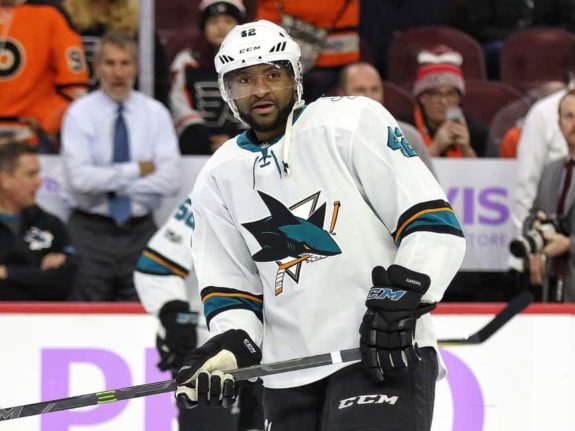
One major up is that of Timo Meier, the team’s most improved player. We’ll discuss Meier in more detail with the forwards.
San Jose’s Expectations and Results
Given the lack of offseason activity, few saw the Sharks as a genuine playoff threat. Some thought it was time to break up the team for a rebuild. Alas, the team was better than expected with younger players taking on bigger roles. A late-season trade even turned some pessimists into optimists.
One way to highlight the youth movement is to compare the differences in the skaters from the final playoff game of this season against Vegas versus the final game from last season’s playoff series against Edmonton. A dozen skaters stayed the same, there were six differences:
-Joe Thornton was age 37 against Edmonton last season. Against Vegas this season, San Jose used Eric Fehr, who is 32.
-Marleau was 37, Kane is 26.
-Hansen was 31, Labanc 22.
-Paul Martin was 36, Joakim Ryan is 24.
-Schlemko was 29, DeMelo is 25.
-Ward was 36, Meier is 21.
In total, this is a decrease of 56 years among these six players. Subtract out the other 12 skaters who each got a year older, and it is still a set of eighteen skaters a cumulative 44 years younger. Or nearly 2.5 years per player.
The result, perhaps surprisingly, was a highly competitive playoff team. This is a considerable accomplishment, given the transition underway. San Jose became younger, faster and held their own despite the (mostly) missing production of the two best players in franchise history.
The Sharks spent a decade getting an average of over 150 points from Marleau and Thornton. This season, it was a quarter of the historic total in the regular season and nothing in the playoffs. Yet somehow, the team filled the voids. They beat most expectations, but still, there is a sense something more is missing. We’ll cover all of this as we go forward with our season review.